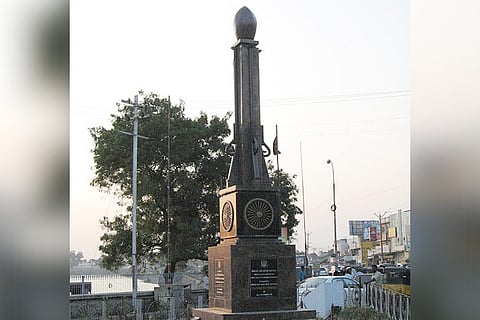

Chennai
This mutiny is significant because it predates the Indian Rebellion of 1857 by half a century. The revolt, which took place in Vellore, lasted one full day, during which mutineers seized the Vellore Fort and killed or wounded 200 British troops. The mutiny was subdued by cavalry and artillery from Arcot.
According to records, the mutiny broke out following a change in dress code introduced in November 1805. General Sir John Craddock, Commander-in-Chief of the Madras Army ordered the wearing of a round hat which included a leather trim that offended the sensibilities of both Hindu and Muslim sepoys. In May, 1806 some sepoys who protested the new rules were sent to Fort Saint George. Two of them – a Hindu and a Muslim – were given 90 lashes each and dismissed from the army. Nineteen sepoys were punished with 50 lashes each and forced to seek pardon from the East India Company.
Two hours after midnight on 10 July, the sepoys killed fourteen of their own officers and 115 men of the 69th Regiment. Among those killed was Colonel St. John Fancourt, the commander of the fort. The rebels seized control by dawn and raised the flag of the Mysore Sultanate over the fort. However, the British troops fought back and nearly 350 of the rebels were killed, and around 300 were wounded during the battle.
While a plaque commemorates the memory of Lieutenant Colonel John Fancourt and the British soldiers who were killed on that day, there appears to be no memorial for the Hindu and Muslim soldiers who lost their lives.
A professional numismatist and philatelist, Tamilvanan had sought the commemoration cover based on the pillar set up at Hazrath Makkaan Junction commemorating the Vellore Mutiny.
“It was then that I started searching for real evidence of the mutiny.” “The last resting place of the British soldiers is only real evidence remaining, as the Hindu soldiers killed in the mutiny would have been cremated according to Hindu custom while Muslim sepoys would have been buried in unmarked graves,” he added.
Visit news.dtnext.in to explore our interactive epaper!
Download the DT Next app for more exciting features!
Click here for iOS
Click here for Android